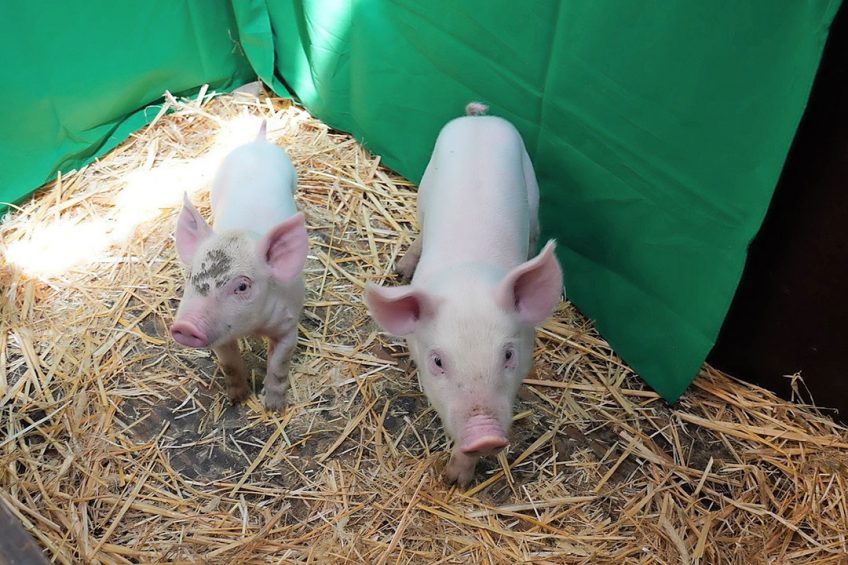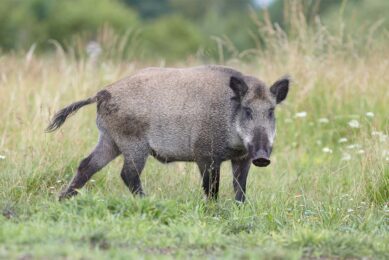Transgenic pigs tested to stop ASF virus replication

Trials will soon start in Germany to observe progress with transgenic pigs with immune cells that show resistance to ASFv.
Originally, tests were scheduled for May to test pigs for ASF resistance, by challenging them with infections with virulent ASFv. The work is now postponed until June due to impacts of the Covid-19 pandemic.
Vaccines and antiviral agents
As African Swine Fever (ASF) continues to infect pig and boar populations in Africa, Asia and Europe, several vaccines and antiviral agents are being developed to combat the virus or obliterate it entirely.
Dr Björn Petersen and his colleagues at the Friedrich-Loeffler-Institut, Germany’s Federal Research Institute for Animal Health, have taken a different approach. They are building on research that has shown that it is possible to generate host organisms (in this case, pigs) that are resistant to viral attacks through the use of gene editing.
Virus receptors on host cells
Past edits involved either knocking out genes related to virus receptors on host cells (no receptor on a cell, no way for a virus to attach and enter) or enabling the host to fight the virus through production of anti-viral ‘guide’ RNA. In the latter scenario, the virus enters the cell, but the ‘guide’ RNA prevents the virus from replicating, or its ‘progeny’ from entering other cells.
CRISPR/Cas9 gene editing tool
Taking a closer look at this past research, the CRISPR/Cas9 gene editing tool has been used successfully in a lab setting to render cells resistant to infection by human immunodeficiency virus (HIV), and to make actual pigs resistant to the virus responsible for Porcine Reproductive and Respiratory Syndrome (PRRSv). Petersen explained that in those trials, human cells became resistant to HIV by removing their ‘T’ immune cell surface receptors to which HIV must attach for entry. It is similar with the PRRSv-resistant pigs, but with immune cells called macrophages.
ASFv gene edit details
Using CRISPR/Cas9, Petersen and his team have applied a genetic construct from a bacteria into foetal swine cells called fibroblasts (the most common connective tissue cells in animals). This edit resulted in a genetic ‘scissor’ that cuts essential parts of the viral genome and therefore destroys it. The cells were tested to see if the bacteria genes were being expressed in a stable manner and indeed, ASFv replication was suppressed. Petersen said, “We found that expression of the anti-viral guide RNA leads to roughly a 10,000-fold decrease virus replication with of the ‘Armenia’ strain of ASF.” And whilst the ‘Kenya’ ASF strain was initially immune to the ‘scissor cuts,’ the team then generated new vectors that express several guide RNAs that apply to all relevant ASFv strains.

The fibroblasts were then cloned to generate living offspring. Macrophages in blood samples from these pigs were challenged with ASFv and reduced levels of ASFv replication were noted.
Inhibiting replication of the ASF virus
Future studies are needed to confirm that this ‘guide’ anti-viral RNA specifically and efficiently inhibits replication of the virus, and whether related cell lines are resistant against all natural ASFv variants. Petersen noted, “Simultaneous targeting of additional virus genes by this anti-viral RNA system could further increase its efficacy, in particular against multiple ASFv strains and isolates. To achieve this, we have started to adapt a multiplex CRISPR/Cas9 vector system. In future, the CRISPR/Cas9 system should also facilitate targeted deletion of other genes in the ASFv, and such forms of the virus could assist in understanding the function of various genes and might be also suitable as attenuated or single-cycle live vaccines.”
The strategy could also be adapted to use with other viruses for which it is hard to develop vaccines or treatments, he said, as well as in the development of new drugs.
Gene editing is a sensitive issue in the European Union. Offspring of gene-edited animals are considered genetically modified organisms in the EU, hence these animals cannot be used for commercial production. For research purposes, however, gene editing is allowed.
The original research paper was published in Scientific Reports, a publication by Nature, in 2018. It was authored by Alexandra Hübner, Björn Petersen, Günther M. Keil, Heiner Niemann, Thomas C. Mettenleiter and Walter Fuchs, all attached to the Friedrich-Loeffler-Institut, in Greifswald-Insel Riems and Neustadt, Germany.

Track the movement of African Swine Fever
For everything you need to know about ASF, from the latest outbreaks to controls stay up to-date…
 Beheer
Beheer








 WP Admin
WP Admin  Bewerk bericht
Bewerk bericht